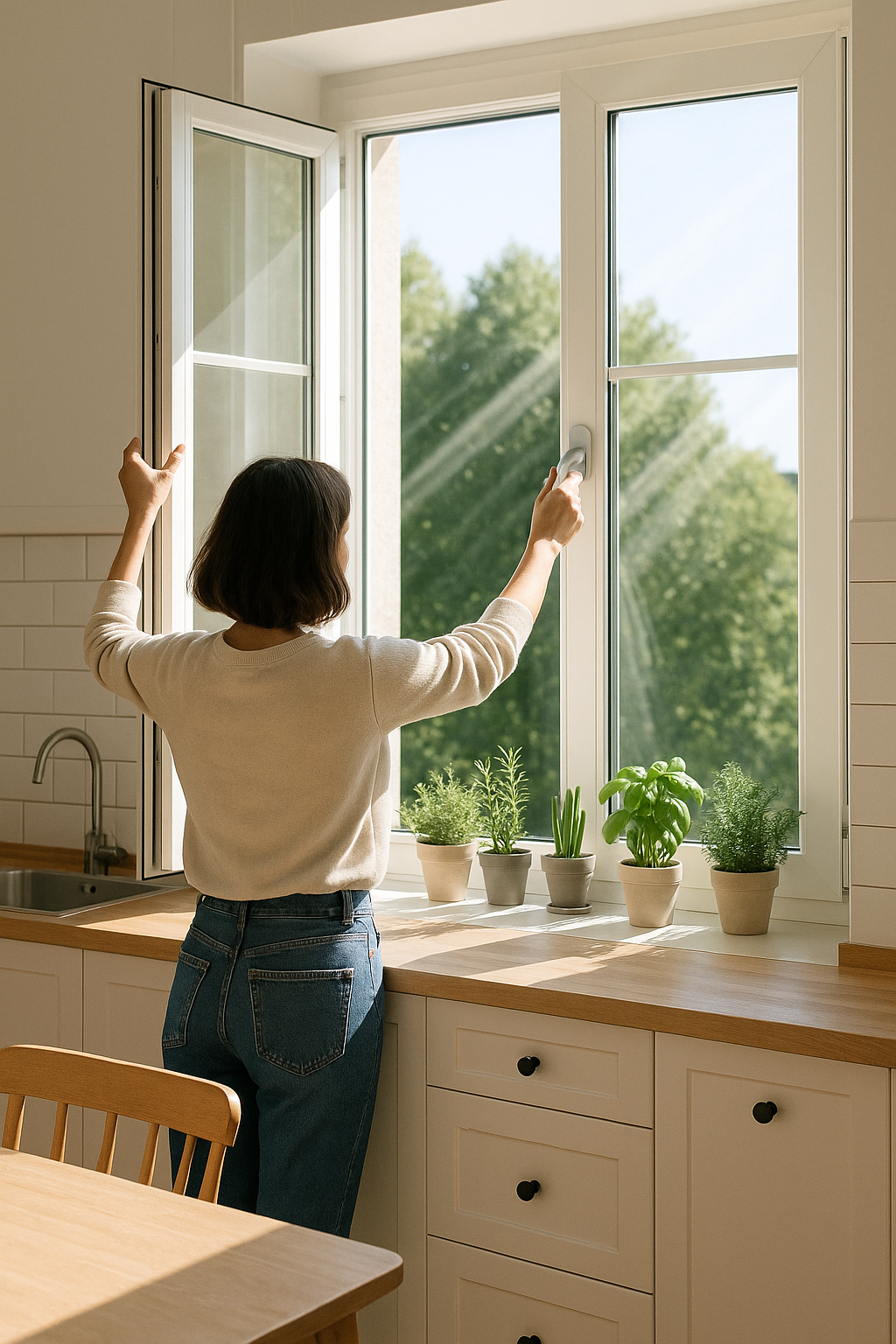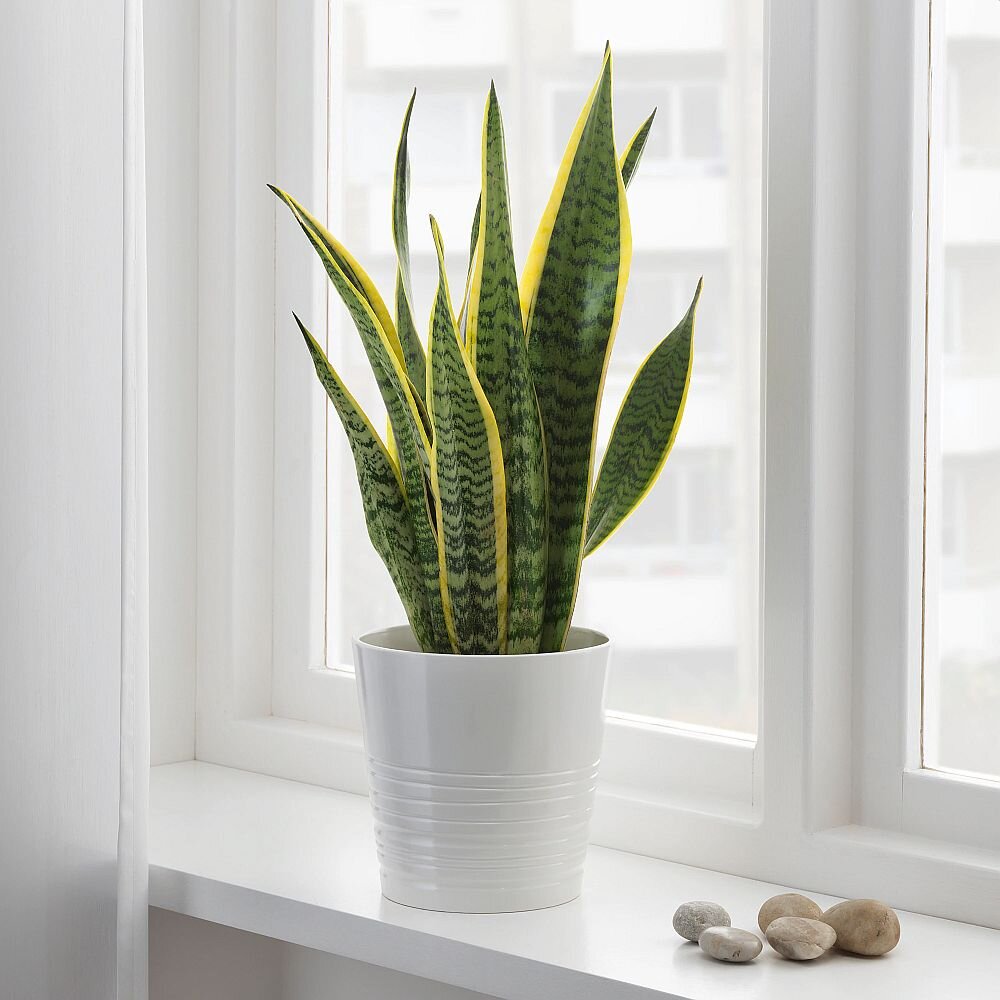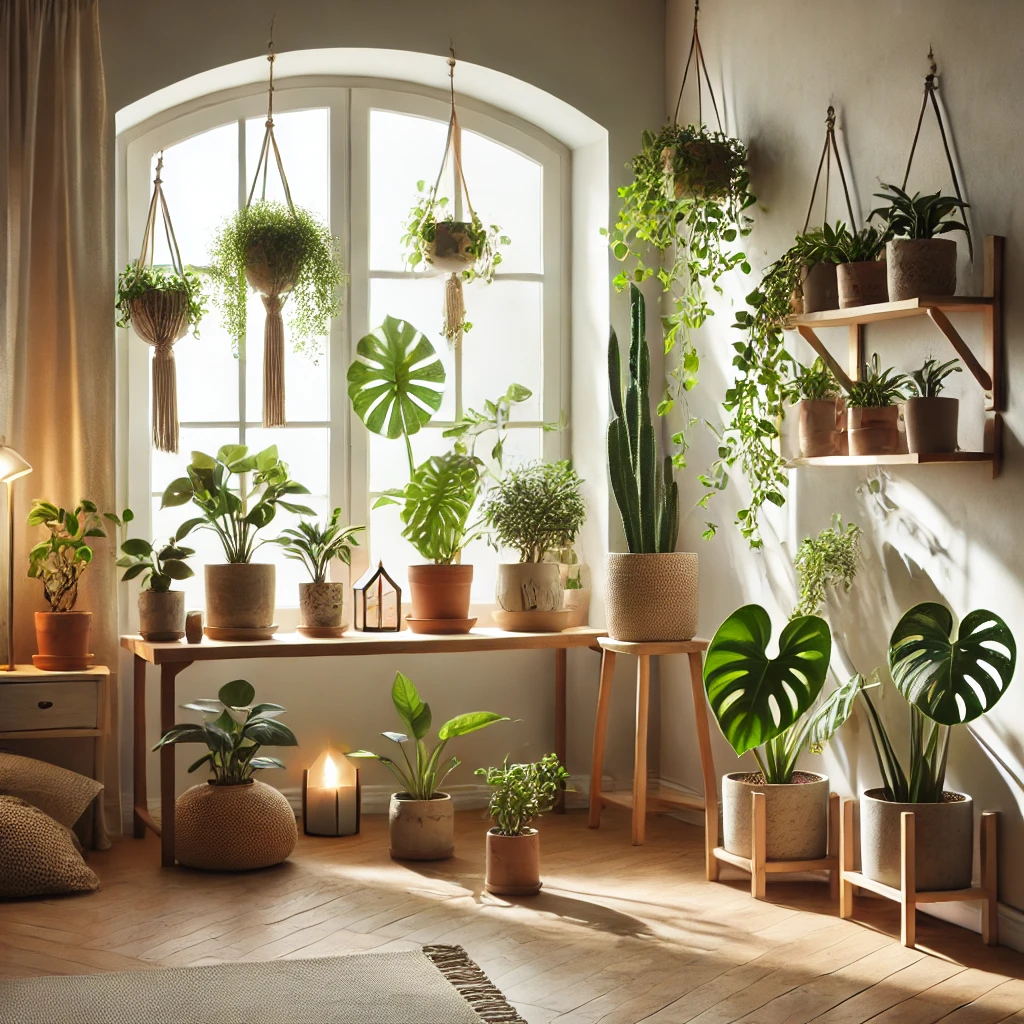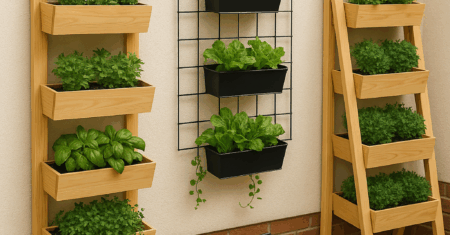5 Natural Ways to Improve Indoor Air Quality

Are you constantly battling allergies, experiencing unexplained headaches, or feeling fatigued even after a full night’s sleep? Your home’s air quality might be the hidden culprit affecting your health and wellbeing. While creating a health-boosting home environment encompasses multiple factors, indoor air quality forms the foundation of a truly healthy living space. The EPA reports that indoor air is typically 2-5 times more polluted than outdoor air, and considering we spend approximately 90% of our time inside, addressing this invisible health threat becomes crucial. Fortunately, you don’t need expensive air purifiers or complex systems to significantly improve the air you breathe at home—nature provides powerful solutions that are both effective and sustainable.
What You’ll Learn About Natural Air Purification
- 🌿 Which houseplants are most effective at filtering specific toxins
- 💧 How humidity levels impact air quality and how to control them
- 🍋 Natural cleaning alternatives that eliminate toxic chemicals
- 🪟 Strategic ventilation techniques that maximize fresh air circulation
- 🧼 Simple daily habits that prevent pollutant buildup
This article is part of our comprehensive guide on How to Turn Your Home into a Health-Boosting Space, focusing specifically on natural air purification methods.
Why Your Indoor Air Quality Matters

Indoor air pollution can be 2-5 times worse than outdoor pollution, according to the Environmental Protection Agency. This invisible threat contributes to numerous health issues ranging from minor irritations to serious conditions. A Harvard study found that people exposed to poor indoor air quality experienced a 50% decline in cognitive function compared to those breathing cleaner air.
Common indoor air pollutants include:
- Volatile organic compounds (VOCs) from furniture, paint, and cleaning products
- Dust mites and pet dander
- Mold spores and bacteria
- Particulate matter from cooking and burning candles
- Carbon dioxide buildup in poorly ventilated spaces
Dr. Maria Rodriguez, environmental health specialist, explains: “Most people don’t realize that their everyday products and activities are creating a cocktail of contaminants in their homes. The good news is that simple, natural interventions can make a dramatic difference in air quality.”
Harness the Power of Air-Purifying Plants
Plants don’t just add beauty to your home—they actively filter toxins through a process called phytoremediation. NASA’s Clean Air Study identified several plants that effectively remove common pollutants like formaldehyde, benzene, and trichloroethylene from indoor air.
Best Plants for Air Purification
- Snake Plant (Sansevieria): Exceptionally good at filtering formaldehyde and releasing oxygen at night
- Peace Lily: Removes ammonia, benzene, formaldehyde, and trichloroethylene
- Spider Plant: Combats carbon monoxide and xylene
- Boston Fern: Specializes in removing formaldehyde and acting as a natural humidifier
- Rubber Plant: Eliminates airborne formaldehyde while requiring minimal care
PRO TIP: For maximum air purification, aim for at least one medium-sized plant per 100 square feet of space. Place plants strategically in areas where you spend the most time or where pollutants are likely to be higher (kitchens, home offices).
For a deeper dive into how specific plants can also help reduce stress levels while cleaning your air, check out our guide to Best Air-Purifying Plants to Reduce Stress at Home.
Switch to Natural Cleaning Products
Conventional cleaning products may leave your surfaces gleaming, but they release harmful VOCs that linger in your air for hours or days. The American Lung Association warns that many common cleaners contain chemicals linked to respiratory problems, headaches, and even long-term health issues.
Easy DIY Natural Cleaning Alternatives
| Purpose | Natural Alternative | Benefits |
|---|---|---|
| All-Purpose Cleaner | Vinegar + water + lemon | Antibacterial, cuts grease, pleasant scent |
| Glass Cleaner | Vinegar + water + cornstarch | Streak-free shine without ammonia |
| Scrubbing Powder | Baking soda + essential oils | Abrasive yet gentle, no toxic residue |
| Disinfectant | Hydrogen peroxide or vodka | Kills germs without triclosan |
| Air Freshener | Essential oils + water | Fragrance without synthetic chemicals |
Making the switch doesn’t require overhauling your cleaning routine overnight. Begin by replacing one product at a time, starting with those you use most frequently. Your lungs—and the overall health of your home environment—will thank you.
Master the Art of Strategic Ventilation

Even the cleanest homes need regular air exchange to prevent pollutant buildup. Proper ventilation removes stale indoor air and replaces it with fresher outdoor air, reducing contaminant concentrations and controlling moisture levels.
Cross Ventilation Techniques
- 🪟 Open windows on opposite sides of your home to create airflow paths
- 🚪 Keep interior doors open to allow air to move freely between rooms
- 🌬️ Position fans strategically to enhance natural airflow
- 🕰️ Ventilate for at least 5-10 minutes, twice daily (morning and evening)
- 🌡️ Adjust ventilation timing based on outdoor air quality and temperatures
“Cross ventilation is one of the most effective ways to refresh your indoor environment without special equipment,” explains building scientist Robert Thompson. “By understanding how air moves through your specific home layout, you can create natural airflow that efficiently replaces stale air.”
For comprehensive guidance on implementing cross ventilation in different home layouts and seasons, explore our detailed article on What Is Cross Ventilation and Why It Matters for Your Health.
Control Humidity Levels for Cleaner Air
Humidity plays a crucial but often overlooked role in indoor air quality. Too much moisture creates breeding grounds for mold, dust mites, and bacteria. Too little causes respiratory irritation, dry skin, and increased susceptibility to viruses.
Natural Humidity Control Methods
- For high humidity areas (bathrooms, basements):
- Use moisture-absorbing plants like Boston ferns
- Place bowls of baking soda in hidden areas
- Create better ventilation during and after showers
- Address any leaks or water intrusion immediately
- For dry spaces (especially in winter):
- Use shower steam strategically (leave bathroom door open after showering)
- Place water vessels near heat sources
- Add moisture-releasing plants like peace lilies
- Dry clothes indoors during winter months
The ideal humidity range is 30-50%. Maintaining this balance naturally contributes significantly to maintaining optimal natural light and air quality throughout your home.
Establish Daily Habits That Protect Your Air
Small, consistent actions often yield better results than occasional major interventions when it comes to air quality. Incorporating these habits into your routine requires minimal effort but provides significant benefits.
Air-Friendly Daily Practices
- Remove shoes at the door to prevent tracking in outdoor pollutants
- Brush pets regularly (outdoors when possible) to reduce dander
- Use lids when cooking to reduce particulate matter
- Avoid synthetic fragrances in personal care and laundry products
- Change and clean air filters in HVAC systems on schedule
- Keep windows closed during high outdoor pollution or pollen days
“The habits that most effectively protect your air quality are the ones you can sustain long-term,” notes indoor environmental specialist Dr. James Lee. “Focus on creating simple routines that become second nature rather than complicated protocols that feel burdensome.”
These practices complement other aspects of creating a health-boosting home by addressing the fundamental need for clean air.
Creating Your Natural Air Quality Improvement Plan

Improving your indoor air quality naturally doesn’t happen overnight, but positive changes begin almost immediately when you take consistent action. Consider implementing these strategies in phases:
Week 1: Assessment and Basic Changes
- Open windows for 10 minutes morning and evening
- Remove one toxic cleaning product and replace with a natural alternative
- Add one air-purifying plant to your most-used room
Week 2: Expanding Your Approach
- Implement shoe removal policy
- Add additional plants to bedroom and living areas
- Begin monitoring and adjusting humidity levels
Week 3: Deepening Your Practice
- Create a cross-ventilation schedule based on your home’s layout
- Replace additional cleaning products with natural alternatives
- Address any moisture issues that could lead to mold
Remember that improving air quality is a cornerstone of creating a truly healthy home environment and works synergistically with strategies like optimizing natural light and reducing anxiety through organization.
Frequently Asked Questions
🌿 How many plants do I need to improve my air quality?
NASA researchers recommend 1-2 medium to large plants per 100 square feet for noticeable air purification benefits. Focus on quality and placement rather than quantity—putting effective purifiers like snake plants and peace lilies in your most-used spaces.
🌡️ Will opening windows improve air quality if I live in a polluted urban area?
Urban dwellers should be strategic about ventilation timing. Check local air quality indexes and ventilate during lower pollution periods (typically early morning). For highly polluted areas, focus more on indoor pollution reduction and consider window filters.
💧 How can I tell if humidity is causing air quality problems in my home?
Watch for warning signs like condensation on windows, musty odors, or visible mold spots. Seasonal symptoms that improve when away from home might also indicate humidity-related air quality issues. An inexpensive hygrometer can help you monitor levels precisely.
🧹 Are all “green” cleaning products truly safer for air quality?
Not necessarily. Some “natural” commercial products contain problematic ingredients like limonene that can interact with indoor ozone. Your safest options are simple ingredients like vinegar, baking soda, and castile soap with essential oils for fragrance.
Additional Resources
From Our Health Home Series
- How to Turn Your Home into a Health-Boosting Space – Our comprehensive guide to creating a home that supports your wellbeing
- Best Air-Purifying Plants to Reduce Stress at Home – Detailed plant selection guide with care instructions
- How Natural Light Affects Your Mental Health – Optimize your home’s lighting for better mood and sleep
- How Home Organization Can Help Reduce Anxiety – Create calm through thoughtful organization
What natural air quality improvement have you found most effective in your home? Share your experience in the comments below!




0 Comments